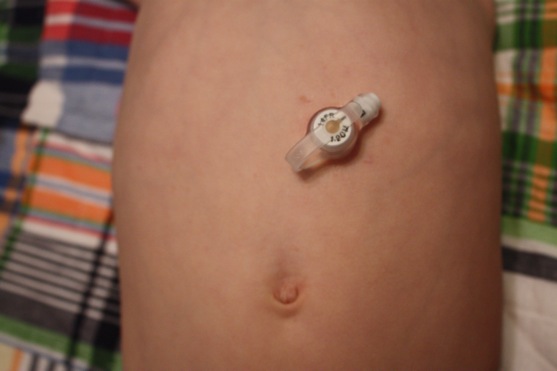Here are some examples:
- Tube Fed Kids Forum - where parents share their experiences or seek advice for their tube fed child
- Hailey Francis - the story of a Hailey, who went through the graz method of tube weaning with a day by day breakdown
- The Crunchy and the Smooth - the story of Heath, a 14 month old child who went through the Graz method with Marcus Wilken.
- The Life and Times of Stella - the story of Stella, who suffered from reflux and milk protein allergy, with a day by day account of the tube weaning
In a nutshell, here is how it works:
- Dramatically decrease the amount of food (~50% less) through the feeding tube over 5 days
- Re-introduce food through various methods when the child shows hunger cues (previously suppressed by the feeding tube). In the presence of hunger, the child re-establishes a relationship with food and learns to trust food and eat.
 |
Case Study: Pediatric Feeding Tube Weaning, Huppert (2011) |
- Behavior problems are interfering with feeding; and
- Diagnosis-specific treatment plan with child-specific interventions and estimated length of treatment are proposed and documented; and
- Medical causes of failure to thrive have been treated (e.g., acidosis, renal insufficiency, malabsorption) without resolution of the feeding problem; and
- Neurological or oral-motor problems exist; and
- Normal feeding milestones have not been met; and
- Physician will coordinate and oversee the treatment program; and
- Suboptimal score on nutritional assessment has been documented
- Unresponsive to initial treatment efforts by a single discipline (e.g., occupational therapist, speech language pathologist/therapist) over a 2-month period
Joy has already received 1 month of therapy and hasn't improved much at all. Because our next step is for Joy to enroll in an intensive feeding program, we intend to appeal to the insurance company and ask that they cover some or all of the cost of the Spectrum feeding program. We know this won't be easy. Some of the mothers already warned us that their insurance companies have refused to pay.






